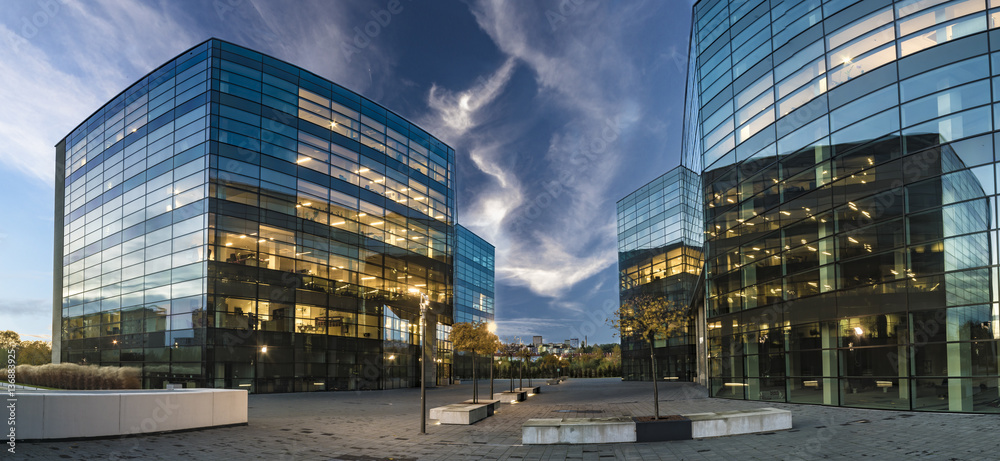The commercial real estate landscape is ever-evolving, with new trends and shifts shaping the market each year. As we step into 2024, several key trends are influencing the way we buy, sell, and manage commercial properties. Whether you’re a seasoned investor or just getting started, understanding these trends can help you make informed decisions. Let’s dive into the top trends that are set to shape commercial real estate this year.

1. The Rise of Mixed-Use Developments
Gone are the days when commercial spaces were strictly for offices or retail. Mixed-use developments, which combine residential, commercial, and recreational spaces, are becoming increasingly popular. These developments cater to the growing demand for convenience, allowing people to live, work, and play all in one place. This trend is particularly strong in urban areas where space is limited, and there’s a push for more sustainable, walkable communities.
2. Sustainability and Green Building Practices
Sustainability is no longer just a buzzword; it’s a priority. In 2024, expect to see more commercial buildings designed with energy efficiency and eco-friendliness in mind. From solar panels and green roofs to energy-efficient HVAC systems, property developers are going green. Tenants and investors alike are increasingly valuing sustainability, not just for its environmental impact but also for the long-term cost savings it offers.
3. The Growth of E-Commerce and Its Impact on Retail Spaces
E-commerce has been growing steadily for years, and its impact on retail spaces is undeniable. With more people shopping online, traditional brick-and-mortar stores are evolving. Many retailers are opting for smaller, more strategically located spaces that serve as showrooms or pickup points rather than full-fledged stores. This shift is leading to a reevaluation of retail spaces and their role in the commercial real estate market.
4. Flexible Workspaces and the Hybrid Work Model
The pandemic accelerated the adoption of remote work, and even as things return to normal, the hybrid work model is here to stay. This shift has led to a growing demand for flexible workspaces. Companies are looking for offices that can adapt to their needs, whether that means coworking spaces, shared offices, or fully serviced offices. This trend is changing the way office spaces are designed, with an emphasis on flexibility, collaboration, and technology.
5. Tech-Driven Innovations in Real Estate
Technology is transforming every aspect of real estate, from property management to tenant experience. In 2024, we’re seeing the continued rise of PropTech—technology designed specifically for real estate. This includes smart building systems, AI-powered property management tools, and virtual reality for property tours. These innovations are making commercial real estate more efficient, transparent, and accessible.
6. The Importance of Tenant Experience
As the market becomes more competitive, the focus is shifting toward tenant experience. Property owners and managers are investing in amenities and services that enhance the tenant experience, from high-speed internet and wellness facilities to community events and concierge services. Happy tenants are more likely to stay, making tenant retention a key priority for property owners.
7. Suburban and Secondary Markets Gaining Popularity
With the rising costs of urban living and the shift to remote work, more businesses and investors are turning their attention to suburban and secondary markets. These areas offer more affordable real estate options, less congestion, and a better quality of life. As a result, we’re seeing increased development and investment in these regions, particularly in sectors like industrial and logistics.
8. The Rise of ESG in Real Estate Investment
Environmental, Social, and Governance (ESG) criteria are becoming increasingly important in real estate investment decisions. Investors are looking beyond financial returns and considering the broader impact of their investments. Properties that meet ESG criteria are seen as more sustainable and less risky, making them more attractive to investors. This trend is driving more developers to prioritize sustainability, social responsibility, and good governance in their projects.
9. Increased Focus on Health and Wellness in Buildings
Health and wellness have become top priorities in building design, especially in a post-pandemic world. Expect to see more buildings equipped with air filtration systems, touchless technology, and spaces designed to promote well-being. Whether it’s office spaces or residential units within mixed-use developments, the emphasis on creating healthy environments is stronger than ever.
10. The Impact of Rising Interest Rates on Commercial Real Estate
Finally, it’s important to mention the economic factors at play. Rising interest rates are expected to have a significant impact on commercial real estate in 2024. Higher borrowing costs could slow down new developments and affect property values. Investors will need to be more strategic, focusing on properties that can deliver strong returns even in a higher interest rate environment.
Final Thoughts
The commercial real estate market in 2024 is dynamic, with trends driven by technology, sustainability, and changing work and lifestyle habits. Whether you’re an investor, developer, or tenant, staying on top of these trends can help you navigate the market effectively. As the landscape continues to evolve, those who adapt and embrace these changes will be best positioned for success.
